How do I convert my AMR files to PDF? 
Follow these six simple steps to quickly convert your audio file (*.amr) to an Adobe PDF file (*.pdf) that you can share with colleagues and potential clients:
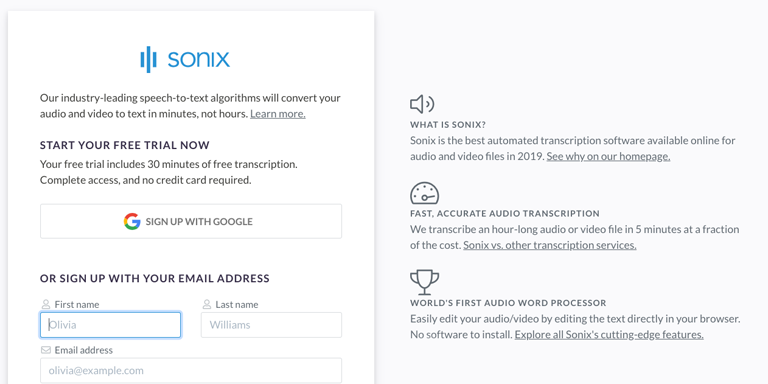
Step 1
Sign up for Sonix's free trial account—includes 30 minutes of free speech to pdf conversion.
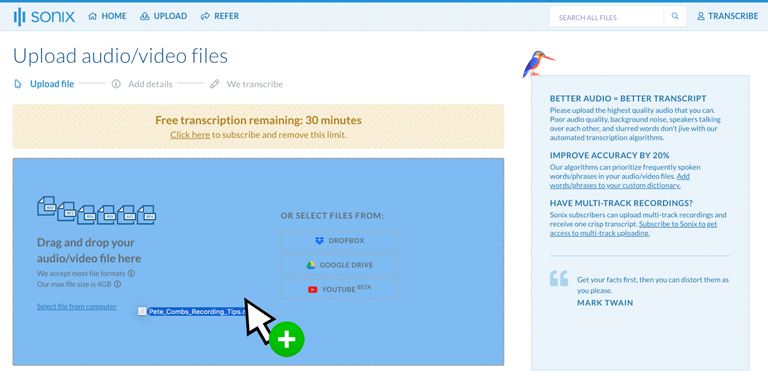
Step 2
Upload your Adaptive Multi-Rate Codec File file(s) (*.AMR) from your computer. You can also connect your Google Drive or Dropbox to Sonix.
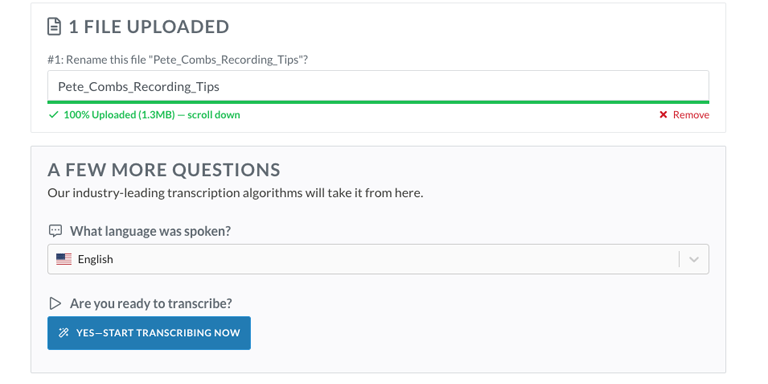
Step 3
Select the language that was spoken in your AMR file. We support over 53 languages supported. Then click the button 'Start Transcribing Now.'
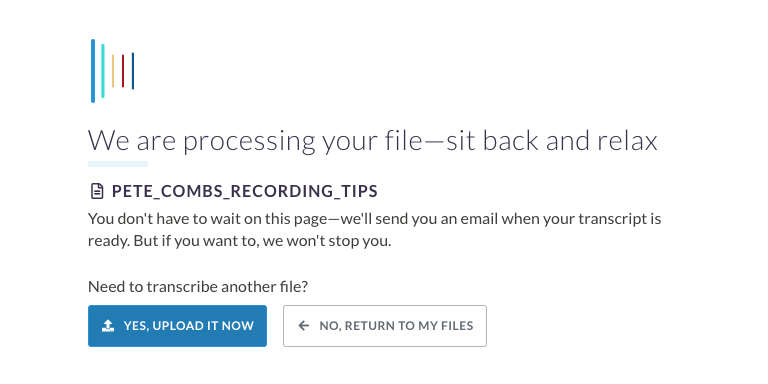
Step 4
Sonix automatically transcribes the audio from your AMR file and converts it to a PDF file using Artificial Intelligence. It'll only take a few minutes so you can make a quick smoothie.

Step 5
Use the Sonix AudioText Editor to polish your transcript; it's an online word processor. Simply type in your browser to correct any words before exporting it to a PDF file.
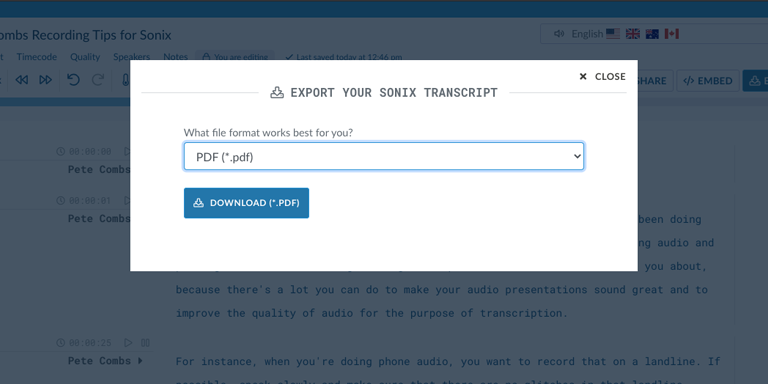
Step 6
Click the 'Export' button. Select 'PDF (.pdf)' from the dropdown to download a text version of your AMR file.
All done! Wasn't that fast? Your AMR file has now been converted to a PDF file and downloaded to your computer!
Thousands of customers trust Sonix to convert their AMR files to PDFs 
Frequently Asked Questions for Adaptive Multi-Rate Codec File (*.AMR) to Adobe PDF 
What is a AMR file?
AMR was adopted as the standard speech codec by the 3rd Generation Partnership Project Group (3GPP)and is now widely used in GSM and UMTS for 3G mobile phones and devices. The Adaptive Multi-Rate (AMR) audio file format that is optimized for speech coding. Thus, most audio saved in the AMR file format is compressed and optimized for human speech frequency ranges. Thus, the AMR speech codec consists of a multi-rate narrowband speech codec that encodes narrowband (200–3400 Hz) signals at variable bit rates ranging from 4.75 to 12.2 kbit/s with normal quality speech starting at 7.4 kbit/s. Since it is used mainly for mobile speech communication, it chooses between the 8 different bit rates based on link conditions.
Does Sonix transcribe audio files with a *.AMR file extension?
Yes, Sonix does automatically transcribe audio files with a .AMR file extension. Sonix is an online audio to text converter. Convert any audio (amr, mp3, m4a, wav, ...) or video (mp4, mov, avi, ...) file to text without installing any software! Sonix quickly and accurately transcribes *.AMR files and converts them to text in a Adobe PDF format.
Know anyone who needs to convert Adaptive Multi-Rate Codec File (.AMR) to Adobe PDF?
We'd appreciate it if you tell them about Sonix—the best way to convert AMR to Adobe PDF.
Other ways to convert your AMR audio files with Sonix 
AMR to text
Use the most accurate speech-to-text technology to convert files: AMR to text.
AMR to docx
Accurately transcribe your AMR file to Microsoft Word Format (docx) so you can bring the transcript into your workflow.
AMR to subtitles
Create subtitles for your AMR files to make them more accessible for your audience.
AMR to srt
Quickly create subtitles from your AMR files and save them as SRTs, one of the most widely supported subtitle formats.
AMR to VTT
Create more advanced captions for your AMR files by using the latest caption format VTT (Video Text Tracks).
AMR to captions
Quickly and easily create closed captions for your AMR files so you can embed them in your video files.
Convert Adaptive Multi-Rate Codec File to PDF with Sonix 
Sonix automatically transcribes and translates your audio/video files in 53+ languages. Easily search, edit, and share your media files. Sonix is an online, fully-automated speech to text service that quickly converts files in the Adaptive Multi-Rate Codec File format to Adobe's portable document format also known as PDF. Sonix does this conversion for you with the highest quality. Fast, accurate, and affordable. Millions of users from all over the world.
Includes 30 minutes of free transcription











